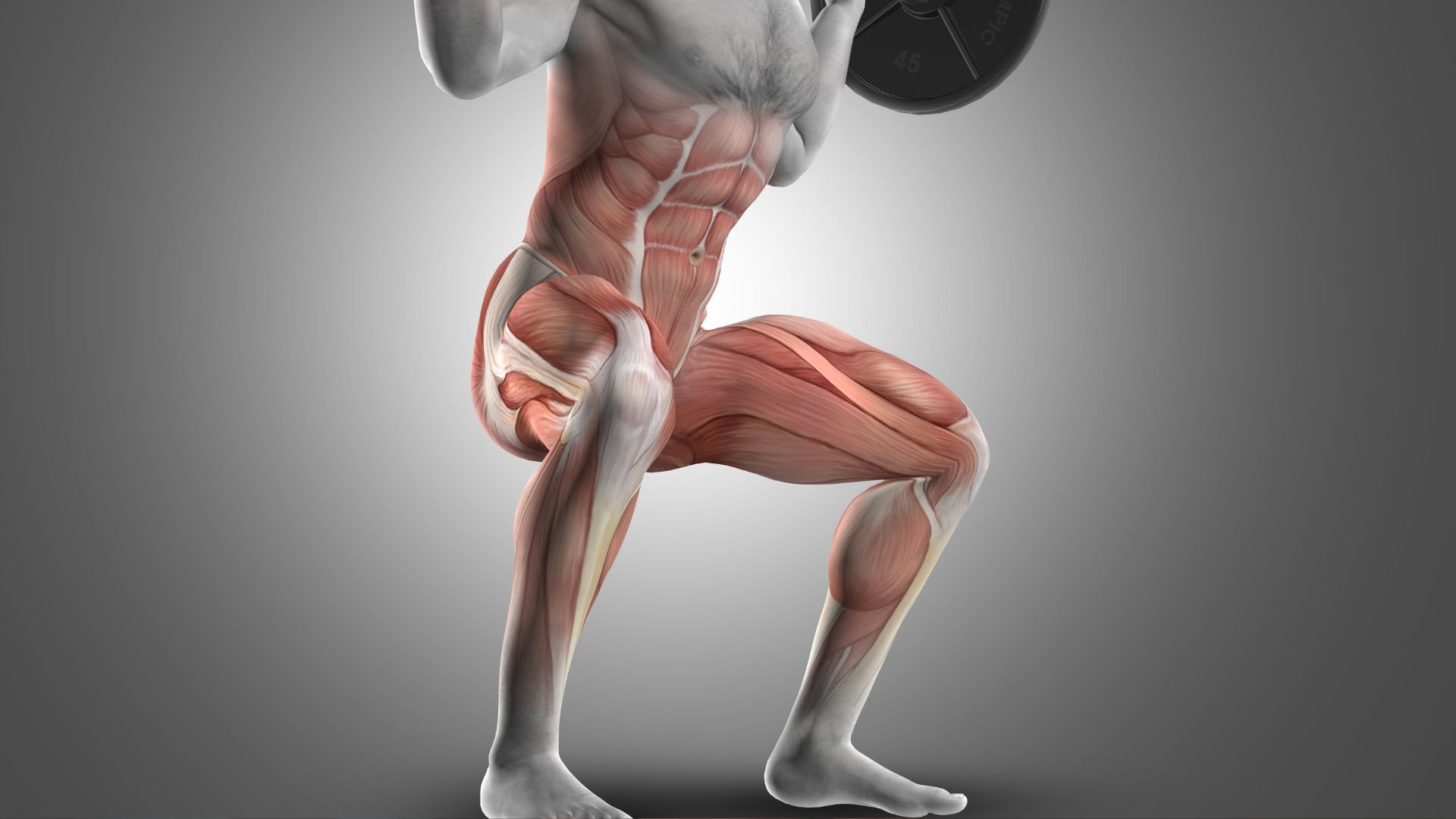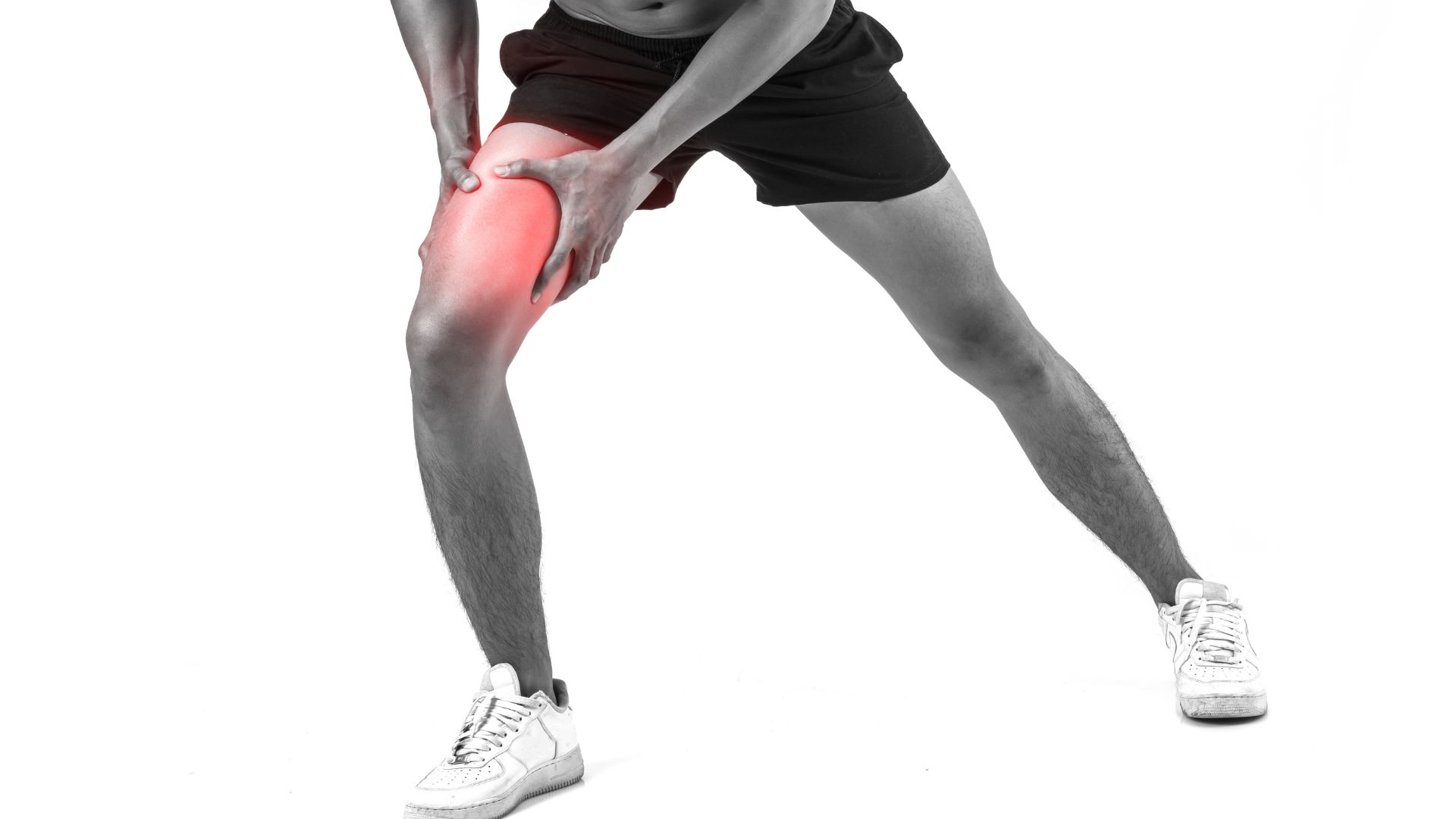When it comes to leg exercises, squats are considered one of the most effective and popular choices.
Not only do they target multiple muscle groups, but they also provide a great overall workout. However, many people wonder why squats specifically make you feel a burn in your hamstrings.
In this article, we will delve into the science behind this phenomenon and explain why squats can be a hamstring-intensive exercise. So, if you’re curious about the burn you feel in your hamstrings during squats, keep reading!
Squats primarily target the quadriceps, but individual factors like stance, depth, and hip hinge can involve the hamstrings. Muscle imbalances, flexibility, and previous training also affect hamstring activation. To minimize hamstring burn, focus on proper form, warm up, stretch, and incorporate supplementary exercises. Consult a fitness professional or healthcare provider for persistent discomfort.
If you experience any persistent discomfort or pain during squats or other exercises, it’s advisable to consult with a qualified fitness professional or healthcare provider for further evaluation and guidance.
Stance and Depth.
When you perform squats with a wider stance and go deeper into the squat, it can increase the demand on your hamstrings and lead to a greater feeling of burn in that area. Here’s an explanation and an example to illustrate this:
Explanation:
- Wider Stance: A wider squat stance means that your feet are positioned farther apart. This widens the base of support and places more emphasis on the muscles on the backside of your legs, including the hamstrings.
- Deeper Squat: Going deeper into a squat means descending lower, with your thighs approaching or going below parallel to the ground. This increases the range of motion and places more stretch on the hamstrings, making them work harder to control the movement.
Example:
Let’s say you typically perform squats with a shoulder-width stance, where your feet are hip-distance apart. In this position, you may primarily feel the burn in your quadriceps.
However, if you widen your stance by moving your feet slightly wider apart, beyond hip-distance, and perform squats, you’ll notice that the emphasis shifts more towards your hamstrings.
The wider stance puts your hamstrings in a more advantageous position to generate force and stabilize your body during the squat movement.
Similarly, if you aim to squat deeper, lowering your body until your thighs are parallel to the ground or even lower, you’ll further engage your hamstrings.
This is because the deeper squat position increases the demand on the hamstrings to control the descent and ascent of your body.
By combining a wider stance and deeper squat, you’ll place greater stress on your hamstrings, resulting in a more pronounced burn or tension in that muscle group.
It’s important to note that the exact muscle activation can vary among individuals, and it’s essential to find a squat stance and depth that feels comfortable and maintains proper form for your body.
Experimenting with different variations and consulting with a fitness professional can help you determine the optimal squat stance and depth for your specific goals and anatomy.

Hip Hinge.
Incorporating a proper hip hinge movement is essential when you perform squats,. This involves flexing at the hips while maintaining a neutral spine.
Hinging forward slightly at the hips during squats can put additional stress on your hamstrings, causing them to work harder. Here’s an explanation and an example to illustrate this:
Explanation:
- Hip Hinge: A hip hinge refers to the movement pattern where you flex at the hips while maintaining a relatively straight or neutral spine. This movement engages the posterior chain muscles, including the hamstrings, glutes, and lower back.
- Squats and Hip Hinge: During a squat, incorporating a hip hinge involves initiating the movement by pushing your hips back before descending into the squat. This movement pattern shifts some of the emphasis onto the posterior chain muscles, particularly the hamstrings.
- Additional Hamstring Engagement: When you hinge forward slightly at the hips during squats, the hamstrings are put in a lengthened position. As a result, they need to contract and work harder to control the descent and ascent of your body, contributing to the feeling of burn in that area.
Example:
Imagine performing a squat without incorporating a hip hinge movement. In this case, you might primarily rely on the quadriceps to initiate the squatting motion, and the emphasis may be more on the front of your thighs.
However, when you consciously engage in a hip hinge movement while squatting, you’ll start by pushing your hips back, allowing them to hinge slightly forward.
This places your hamstrings in a more stretched and loaded position. As you descend into the squat, the hamstrings are recruited to control the movement and contribute to the upward phase as you rise.
By incorporating a hip hinge during squats, you’ll activate your hamstrings to a greater extent, leading to increased engagement and potentially a greater feeling of burn in that muscle group.
It’s important to note that the degree of hip hinge may vary depending on factors such as your body mechanics, flexibility, and training goals.
Working with a fitness professional can help you refine your hip hinge technique to ensure proper form and optimal muscle activation during squats.
Remember to listen to your body and adjust the range and intensity of the hip hinge based on your individual capabilities and comfort level.
Individual Differences.
When it comes to squats, individual differences in body mechanics and muscle activation patterns can influence how much you feel your hamstrings working.
Factors such as muscle imbalances, flexibility, and previous training adaptations can contribute to variations in hamstring recruitment during squats. Here’s an explanation and an example to illustrate this:
Explanation:
- Muscle Imbalances: Muscle imbalances occur when certain muscles are stronger or tighter than others. For example, if your quadriceps are relatively stronger or tighter compared to your hamstrings, you might naturally rely more on your quads during squats. Conversely, if your hamstrings are stronger or tighter, they may become more engaged during the exercise.
- Flexibility: Individual differences in hamstring flexibility can affect their involvement in squats. If you have tight hamstrings, they may have a tendency to activate more during squats, especially during the eccentric (lowering) phase when the hamstrings lengthen under tension.
- Previous Training Adaptations: Your previous training experiences and adaptations can also influence muscle recruitment patterns during squats. If you have a history of exercises that target the hamstrings, such as deadlifts or hamstring curls, your body may naturally recruit the hamstrings more during squats due to neuromuscular adaptations.
Example:
Let’s say two individuals with different muscle imbalances perform squats. Person A has stronger hamstrings compared to their quadriceps, while Person B has stronger quadriceps compared to their hamstrings.
Person A, with stronger hamstrings, may feel a greater burn in their hamstrings during squats. This is because their body naturally recruits the hamstrings more to compensate for the muscle imbalance.
On the other hand, Person B, with stronger quadriceps, may feel the burn primarily in their quads due to the dominant recruitment of those muscles.
Furthermore, if Person A has better hamstring flexibility than Person B, they may experience a greater stretch and subsequent activation of their hamstrings during the squat movement.
This can contribute to a more pronounced burn in the hamstrings for Person A compared to Person B.
Similarly, if Person A has previously trained their hamstrings extensively through exercises like deadlifts or hamstring curls, their body may have developed stronger neuromuscular connections to the hamstrings.
As a result, during squats, their hamstrings may be more readily recruited, leading to a heightened sensation of burn in that muscle group.
It’s important to recognize that these examples illustrate potential scenarios, and individual variations can be more complex.
Muscle recruitment patterns are influenced by multiple factors, and what you personally experience during squats may differ.
It’s always a good idea to focus on maintaining proper form, addressing muscle imbalances through targeted training, and listening to your body’s feedback to optimize your squatting technique.
Here’s a tabular breakdown of the key considerations when performing squats:
| Consideration | Explanation |
|---|---|
| How | Focus on proper form, including maintaining a neutral spine, engaging core muscles, and ensuring knees track in line with your toes. |
| Why | Squats target multiple muscle groups, including the quadriceps, hamstrings, glutes, and core, promoting strength and lower body stability. |
| When | Squats can be included in your workout routine based on your fitness goals and program. They can be performed during leg or full-body training sessions. |
| Where | Squats can be done at the gym using a barbell, dumbbells, or resistance machines. They can also be performed at home using bodyweight or equipment like resistance bands. |
| What | Consider your individual factors such as muscle imbalances, flexibility, and previous training adaptations. Adjust your stance, depth, and hip hinge based on your specific needs and comfort. |
Remember that this table provides a concise overview of the key considerations. Each aspect can be further explored and tailored to your specific circumstances and goals. It’s always recommended to consult with a fitness professional to ensure proper technique and personalized guidance.
Conclusion.
In conclusion, squats can elicit a burn or tension in the hamstrings for several reasons. The width of your squat stance and the depth you reach can impact the activation of different muscle groups, including the hamstrings.
A wider stance and deeper squat can increase the demand on the hamstrings, leading to a greater feeling of burn in that area.
Additionally, incorporating a proper hip hinge movement during squats, which involves flexion at the hips while maintaining a neutral spine, can put additional stress on the hamstrings.
By hinging slightly forward at the hips, the hamstrings are required to work harder to control the movement, contributing to the sensation of burn in that muscle group.
Furthermore, individual differences play a role in hamstring activation during squats. Factors such as muscle imbalances, flexibility, and previous training adaptations can influence how much you feel your hamstrings working.
Some individuals naturally recruit their hamstrings more during squats due to these factors, leading to variations in the sensation of burn.
It’s important to note that everyone’s experience during squats can be unique, and individual differences should be taken into account.
Listening to your body, maintaining proper form, and addressing any muscle imbalances through targeted training can help optimize your squatting technique and overall muscle activation.
If you have any concerns or persistent discomfort during squats or other exercises, it’s recommended to seek guidance from a qualified fitness professional or healthcare provider.
They can provide personalized advice based on your specific needs and help ensure safe and effective workouts.

Hey there, it’s Mike Rrsq, the Editor-in-Chief over at Jsquat.com, and I’m absolutely obsessed with all things squat fitness! I’ve been lucky enough to get some serious recognition for my work in this field. With a solid background in the fitness and wellness industry, I’ve been there right from the get-go, helping shape this website into what it is today.
You see, I’m not just the boss around here; I’m also a passionate contributor. I love sharing my insights through my articles, and trust me, they’re not your run-of-the-mill stuff. Each piece I write is a labor of love, filled with my expertise and real-world experience in the fitness universe. So, if you’re into fitness and looking for some inspiration, you’re in the right place!

